Currants, like all berry bushes, are preferably planted in the fall. The best time is the end of August-beginning of September. If the planting date is later, you should be guided by the weather.
| Content: What care does currants require in autumn?
|
If the autumn is cold, with early frosts, then the seedlings are buried in a horizontal position, and in the spring, as soon as the ground thaws, they are planted.
Autumn planting of currants
Currants vegetate almost until the coldest weather; their growth stops only at a temperature of 6-7°C. Therefore, if the autumn is warm, you can plant the crop in late September-early October. The shrub should have 2 weeks before cold weather arrives to allow it to take root.
Preparing the landing site
Currants are usually planted along the fence, along the boundaries of the site. It is unpretentious, grows well in the shade and does not require special care. In the southern regions, it is even preferable to plant it in shaded areas so that the bushes suffer less from the heat. The crop loves moist, fertile soils, but if water stagnates on the site, then currants are planted on high ridges raised 15-20 cm above the main surface.
The root system of blackcurrant lies shallow, so deep planting holes should not be made. If the bushes are planted in one row, then they make not planting holes, but a trench.
In the southern regions, it is better to plant currants on the northern or eastern side of the site, but protected from cold winds. In the northern regions - on the south side.
Soil preparation
The soil for autumn planting of currants is prepared 4-7 days before planting the seedlings. At a distance of 1.5-2 m from the trench or planting holes, add organic matter: at 1 m2 up to 5 kg of completely rotted manure, humus or compost, covering them to a depth of 15-20 cm.
If there is chicken manure from organic matter, then it is used only in diluted form, since it is the most concentrated organic fertilizer.If applied incorrectly, you can burn the soil and destroy the plants.
Black currant tolerates acidic soils well (pH 4.8-5.5). If the soil is very acidic, then long-acting deoxidizers are added to the planting holes. Dolomite flour, chalk, gypsum, and dry plaster are suitable for this purpose.
You can add pre-crushed eggshells. Fluff is absolutely not suitable as a deoxidizing agent. It is a fast-acting lime fertilizer, easily dissolves in water and is washed into the lower layers of the soil with rain. In the spring, when the growing season begins, there is no longer any fluff in the root layer, therefore, there is no deoxidizing effect. The same applies to ash: the calcium it contains is quickly washed out and is not suitable as a deoxidizing agent.
Black currant does not tolerate high concentrations of lime in the soil, so these fertilizers are applied in reduced doses (1-2 cups per hole), always mixing them with soil and covering them with soil to a depth of 4-6 cm. To reduce soil acidity in subsequent years, water the shrub with lime milk.
The culture belongs to phosphorus-loving plants. Therefore, when planting currants in the fall, add 2 tablespoons of double superphosphate to the holes.
Preparing the planting hole
The planting hole is made 40x40 cm in size and 40-50 cm deep. The top fertile layer of soil (18-20 cm) is folded in one direction, the lower ones are thrown in the other direction and are not used when planting.
During autumn planting, 6-8 kg of organic fertilizers and superphosphate are added to the planting holes. Nitrogen and potassium fertilizers should not be applied, since they are washed into the lower soil layers in the fall and spring and will be inaccessible to seedlings in the spring.
The added organic matter is mixed with soil and the hole is filled 1/4 full.Then phosphorus fertilizers are added and mixed with the soil. A fertile layer without fertilizers is poured on top, filling the hole halfway, then water it well. After 4-6 days, currants are planted.
If seedlings are planted in a trench, then its depth should be no more than 20-25 cm. The prepared area is filled with rotted organic matter (6-8 kg), double superphosphate is added, everything is dug up onto the bayonet of a shovel and spilled well with water.
The distance between the bushes should be 1.5-2 m. With compacted plantings, the yield decreases; it is more difficult to care for currants and harvest without damaging the shoots.
Planting black currants
Currant seedlings must be strong, healthy, with strong roots, sufficiently branched. One- and two-year-old seedlings are used for planting. Young bushes are planted at an angle of up to 45°, making sure to deepen the root collar by 3 buds (6-8 cm). From these buds, strong basal shoots will subsequently develop.
When planting currant bushes with an open root system, they must be placed in water for 1 hour before planting. This is necessary so that the roots replenish the moisture balance.
A mound of earth is poured into the planting hole, the roots are spread over it, making sure that they do not bend upward or get tangled, and they are covered with earth, compacting it evenly, then watering is carried out. The 3 lower buds must be covered with soil in a layer of at least 2 cm.
Also, only 3-4 buds are left on the shoots, removing all the rest. Pruning after planting is mandatory, otherwise in the spring the bush will begin to grow to the detriment of the still insufficiently developed root system; the leaves will bloom only thanks to the juices of the stem. Such bushes begin to age in the spring.
If you do not prune when planting, the bushes grow and branch poorly and do not bear fruit for a long time.
If the seedlings are weak, then 2 bushes are planted in one hole, tilting them in different directions. Before planting, all leaves are removed from the branches to avoid excessive evaporation and drying out of the seedlings. After planting, make a circle near the trunk so that the root collar is not exposed during watering.
When planting in a trench, the seedlings are placed obliquely, the ends of the stems are laid on the edge of the trench, after which it is covered to the brim with earth and watered. The ends of the branches are also shortened to 3 buds.
If you plant a seedling vertically and remove all the shoots, leaving only the strongest one, you can grow currants in the form of a tree.
- But, firstly, the standard forms of currants are short-lived, they begin to bear fruit later and produce harvests for only 5-6 years.
- Secondly, the yield of a berry tree is always significantly less than that of the bush form of the crop.
Blackcurrant takes root within 13-17 days, so it is planted in such a way that it has time to take root before the cold weather.
Although modern currant varieties are quite self-fertile, yields increase when several varieties are planted.
Caring for currant seedlings after autumn planting
Caring for currants in the fall after planting involves regular watering. The earth should not dry out. In case of dry weather, watering is carried out once a week at the rate of 10 liters of water per bush.
The ground under the bushes is mulched with hay, straw, sawdust, and peat. This protects the roots from freezing in the event of cold weather without snow cover. This technique also helps preserve moisture in the tree trunk circle.
Autumn care for currants
Watering. Currants enter the dormant period very late.Its roots work until the soil temperature drops below 8°C. Only after this does the growing season stop. Before the onset of cold weather, the crop continues to grow young shoots. To ensure that currant bushes are well prepared for winter, they are watered regularly.
Starting in September, each bush is watered once a week. As the temperature drops, the time between watering increases to 10-14 days. Watering rate is 20 l/bush. 15-20 days before the end of the growing season, water-recharging irrigation is done. This technique increases the winter hardiness and frost resistance of currants. The water consumption rate for moisture-recharging irrigation is 40-50 l/bush.
Top dressing. In autumn, currants are not fertilized at all. All fertilizers are applied in spring and in the second half of summer. If the crop grows on very poor soils, then once every 2 years in late autumn at a distance of 2-3 meters from the bush add organic matter (rotted manure, compost, humus).
In soils rich in organic matter, black currants do not do well. She comes from the forest and is more suited to less fertile soils.
It must be remembered that organic fertilizers increase soil fertility, and mineral fertilizers affect the growth and productivity of plants themselves. Therefore, in the fall, no mineral fertilizers can be applied to currants.
Autumn treatment of currants from pests and diseases.
In autumn, treatment is usually carried out for preventive purposes. By this time almost all currant pests go to winter, pathogens become less active and form spores. The purpose of autumn measures to protect currants is to destroy wintering forms of pests and diseases and prevent their appearance next spring.
In early autumn, spider cocoons are collected from the bushes (pests overwinter in them), damaged deformed leaves, and the curved ends of the shoots are cut off.
When the leaves fall, swollen round buds immediately become visible on the branches, affected by kidney mites. It is better to collect them in the fall, since in the spring the crop begins to grow very early and you can miss the moment of bud break when the pest comes out.
If the shoots are severely affected, they are cut out to the base. If the entire bush is affected, it is cut out completely. Next spring, young shoots that are not infected with the pest will emerge from the roots.
In late autumn, when the air temperature is no higher than 8°C, currants, and indeed the entire garden, can be treated with a very high concentration of urea (urea) solution. At this temperature, the growing season stops and the nitrogen contained in this fertilizer will no longer be absorbed, and during the winter it will be washed out with meltwater into the lower soil layers and will not harm the plants. But a high concentration of the chemical kills pathogens and their spores, as well as pests of all types (larvae, pupae, eggs). To obtain a working solution, 700 g of urea is dissolved in 10 liters of water. The plants are sprayed and the soil is spilled in the tree trunk circles. Treatment is repeated in early spring until sap flow begins.
Pruning currants in autumn
Currant pruning can be carried out either in late autumn, when the growing season stops, or in early spring, when it has not yet begun. The main indicator for pruning is the air temperature: it should not be higher than 8°C.
In early autumn, currant pruning should not be done, since it causes increased growth of young shoots that will not have time to ripen before frost and will freeze.And this negatively affects the frost resistance of currants as a whole.
The main purpose of pruning is to increase crop yield. It is held annually and is a mandatory event for caring for currants. If pruning is not carried out, the bush thickens and, as a result, its productivity decreases.
In the first 3-4 years, the crown of the bushes is formed; in subsequent years, rejuvenating pruning is done.
Formation of bushes
Immediately after planting the seedling, all its shoots are cut off, leaving only 3 buds on each.
The branch is divided into 3 main parts: upper, middle and lower.
- The upper part is the growth zone; each shoot grows in length due to its apical bud.
- In the middle part there are fruits - fruit branches. The berries are formed precisely in the middle part of the shoot.
- The lower part is the branching zone. In this part, strong young shoots form from the main branch.
Therefore, severe shortening of the branches of a young seedling makes it possible to form strong lateral branches.
Next autumn, the young growth is shortened by 2-3 buds, giving the opportunity to form fruit branches in the middle part of the shoot. The procedure is repeated for the 3rd year. In addition, new young stems begin to grow from the buds remaining in the ground. Of these, 2-3 of the strongest are selected, the rest are removed.
By the age of 4, a bush formed in this way will have 10-12 well-branched powerful skeletal branches.
Pruning mature blackcurrant bushes
In the 4th year, old, diseased branches begin to be cut out. The old shoot differs from the young one in the color of the bark: in the young it is light brown, in the old it is gray with dried fruits.In addition, orange dots often appear on old branches - this is a fungus that settles on dying wood and never affects young shoots. Such branches are cut to the base. In spring, a new stem will emerge from the root.
All diseased, weak, dry branches are cut down to ground level. The rest are shortened. The main criterion for pruning is the current year's growth. If the branch branches well, then it is shortened by 2-3 buds, with average branching - by 4-6 buds, if branching is poor - it is cut off by more than half.
The branches growing inside the bush are completely cut out, since there will be no berries on them. If the shoots intersect, the weakest one is removed. Shoots lying on the ground are also completely removed, since their productivity is much lower.
If the bush is old and produces very little root shoots, then severe pruning is carried out, shortening 5-7 skeletal branches by 1/3. If this does not help, then cut out 4-5 old or weak shoots to the base, then a significant amount of root growth will appear. 2-3 strong branches are selected from it and shortened in the fall, leaving 3-4 buds. The remaining shoots are completely cut out.
If the current year's growth is insignificant (less than 10 cm), then the branch is cut to the place where many fruit branches grow. If there are few of them on a branch, then it is cut down to the base, since it is unproductive.
Rejuvenation of old bushes is carried out gradually. In the fall of the first year, 1/3 of their stems are cut down to the ground.
Next fall, 3-4 powerful shoots are selected from the young shoots and shortened by 1/3. The remaining stems are cut down to the base. Another 1/3 of the remaining old stems is cut out.
The operation is repeated in the 3rd year.Thus, after 3 years, a completely renewed blackcurrant bush appears, which will produce high yields.
Propagation of black currants in autumn
In late summer or early autumn you can propagate currants from woody cuttings. Only mature branches are suitable for this; they are light brown in color. If the shoot is green, then it is unsuitable for autumn propagation.
Take well-ripened annual shoots from the current year's growth. If the top of the shoot is still green, it is cut back to mature (brown) wood. The shoot should be at least 25 cm long with 13-15 buds. All leaves are removed from it and cut into cuttings containing 5-6 buds.
The lower cut must be made oblique. The cuttings are planted only obliquely at an angle of 45° at a distance of 8-10 cm from each other, deepening 3-4 buds into the ground. No more than 3 buds are left above the soil surface.
The place for planting cuttings should not be in direct sunlight; it is better to plant them in partial shade. The planted cuttings are watered and covered with a glass cap or film. The earth should never dry out. It is advisable to spray the cuttings with water every day. Rooting occurs in 15-20 days. When leaves appear on the rooted shoots, the cap is removed.
Caring for currant cuttings. Young bushes are left to grow in the same place all autumn, watering regularly in case of dry weather. If the autumn is cold with early frosts, then the leaves that appear are removed. Transplanted to a permanent place in the fall of next year.
Until this time, it is extremely undesirable to touch them, since the still weak root system is significantly damaged, the bushes then take a long time to take root and later begin to bear fruit.If possible, it is better to immediately plant the cuttings in a permanent place.
It is not advisable to propagate currants by dividing the bush. This is the surest way to destroy a berry garden.
Transplanting currants in autumn
As already mentioned, it is better to do all planting and replanting of bushes (not just currants) in the fall. If there is a need to replant currants, then this can be done all autumn as long as the growing season continues. The main thing here is that the bush has time to restore the roots damaged during replanting.
When replanting, first water the shrub abundantly around the perimeter, then dig it in at a distance slightly greater than the crown, to a depth of 25-30 cm. The larger the earthen lump, the less damage to the roots. The bushes are shaken and taken out of the hole. If the roots are too long and interfere with digging out the bush, they are cut off.
Young currant bushes can be transplanted into trenches, adults - into planting holes. When transplanting to a new location, the roots should not come into contact with fertilizers.
Preparing currants for winter
Preparing currants for winter includes pruning, watering, and in the northern regions, earthing up young plants.
Pruning is carried out in late autumn, when the temperature is below 8°C. It can be carried out in the pre-winter period or even in winter in the absence of snow, when there is access to the bushes. With the early onset of cold weather, when the bushes are still green, the leaves are sniffed, otherwise the currants may freeze.
In the fall, water-recharging irrigation must be carried out. This significantly increases the winter hardiness and frost resistance of the crop. It is carried out 2-3 weeks before the onset of cold weather. Even in the event of a rainy autumn, watering is still necessary, since the moisture of the soil under the bushes is insufficient.In this case, the watering rate is reduced to 7-10 liters of water per bush.
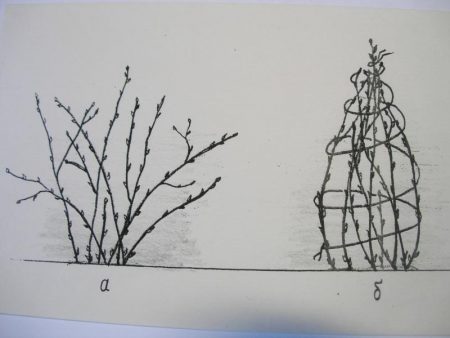
Caring for currants in late autumn
Currant branches can withstand frosts down to -40°C, while the roots are only -15°C. Therefore, in the fall, in regions where there are severe frosts in winter, seedlings and young bushes are sprinkled with earth. But in early spring they need to be cleared out immediately after the snow melts. Otherwise, the buds sprinkled with soil will take root, while the bulk of the roots have not yet awakened. This situation is very harmful to the growth and development of the bush.
Autumn care for currants is very simple and easy. The main thing is to carry it out regularly, then the yield will be high. Currants are a very rewarding crop.
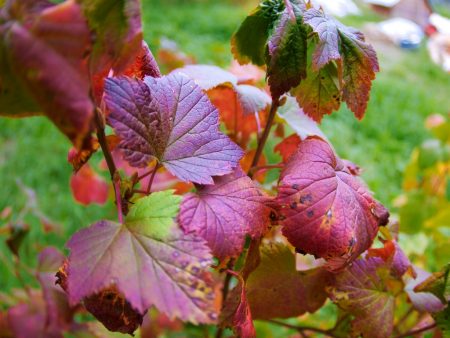
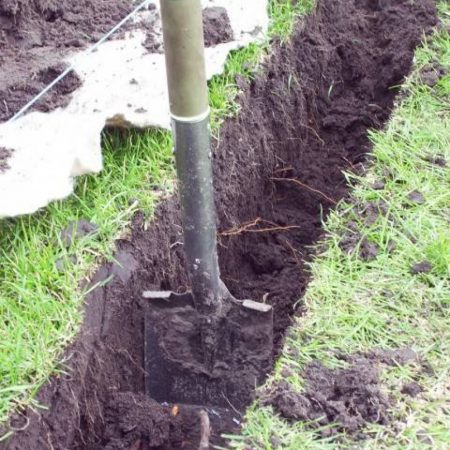
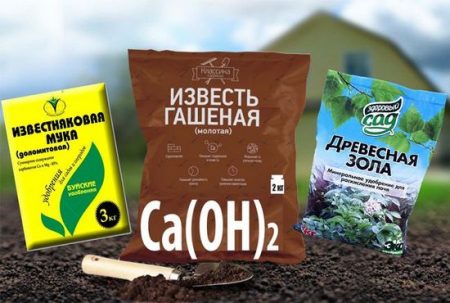
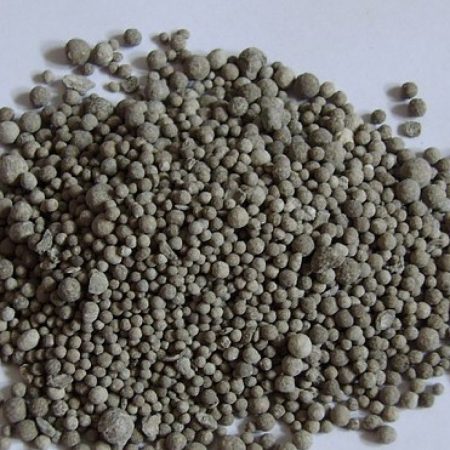
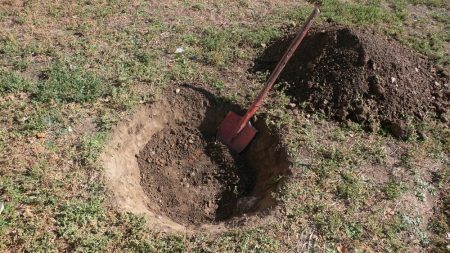
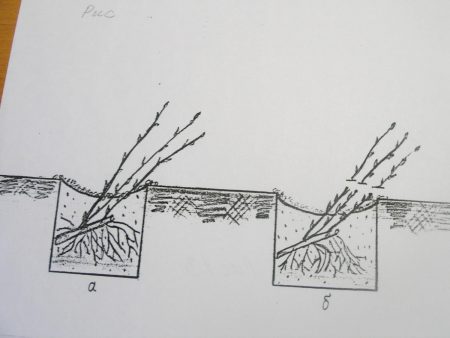
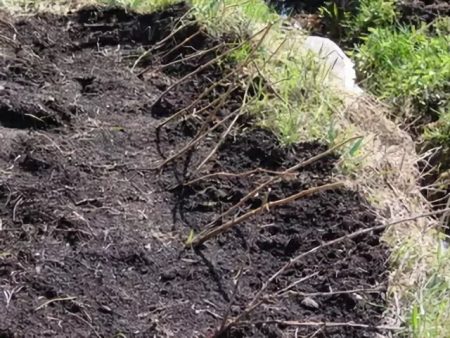
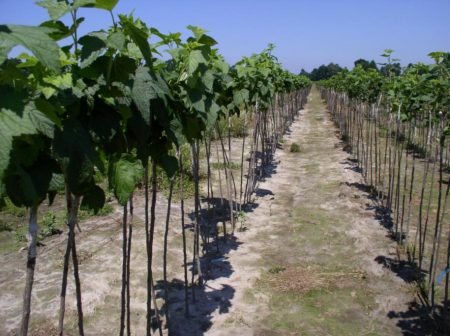
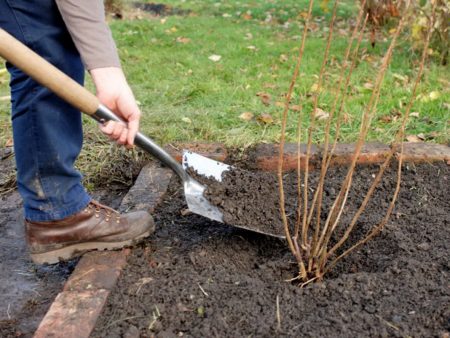
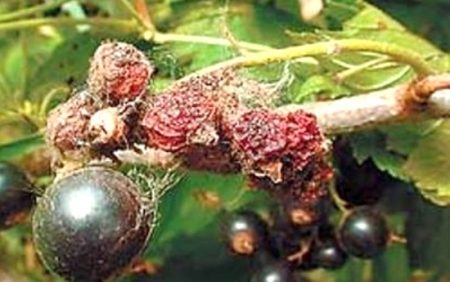
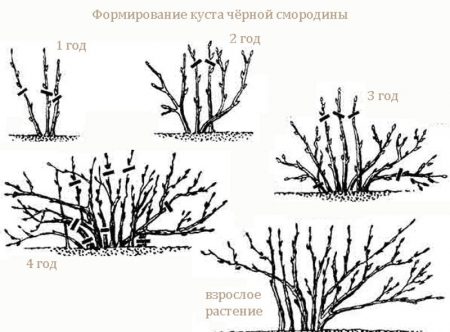
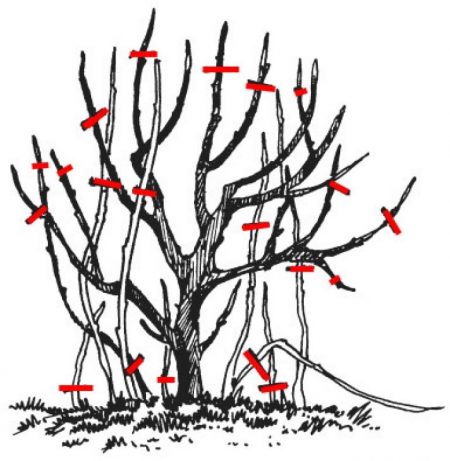
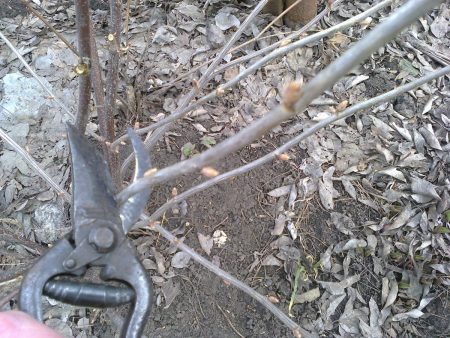

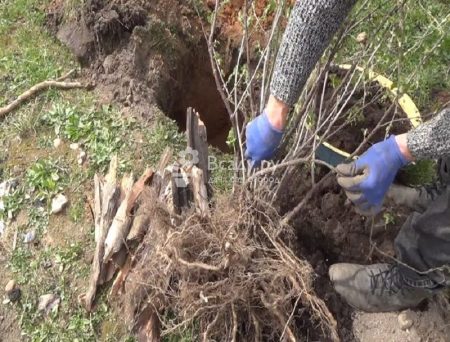

 (5 ratings, average: 4,60 out of 5)
(5 ratings, average: 4,60 out of 5) CUCUMBERS NEVER GET SICK, I'VE BEEN USING ONLY THIS FOR 40 YEARS! I SHARE A SECRET WITH YOU, CUCUMBERS ARE LIKE THE PICTURE!
CUCUMBERS NEVER GET SICK, I'VE BEEN USING ONLY THIS FOR 40 YEARS! I SHARE A SECRET WITH YOU, CUCUMBERS ARE LIKE THE PICTURE! You can dig a bucket of potatoes from each bush. Do you think these are fairy tales? Watch the video
You can dig a bucket of potatoes from each bush. Do you think these are fairy tales? Watch the video
 How our fellow gardeners work in Korea. There is a lot to learn and just fun to watch.
How our fellow gardeners work in Korea. There is a lot to learn and just fun to watch. Eye trainer. The author claims that with daily viewing, vision is restored. They don't charge money for views.
Eye trainer. The author claims that with daily viewing, vision is restored. They don't charge money for views. A 3-ingredient cake recipe in 30 minutes is better than Napoleon. Simple and very tasty.
A 3-ingredient cake recipe in 30 minutes is better than Napoleon. Simple and very tasty. Therapeutic exercises for cervical osteochondrosis. A complete set of exercises.
Therapeutic exercises for cervical osteochondrosis. A complete set of exercises. Which indoor plants match your zodiac sign?
Which indoor plants match your zodiac sign? What about them? Excursion to German dachas.
What about them? Excursion to German dachas.